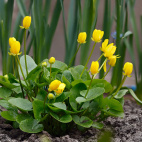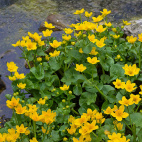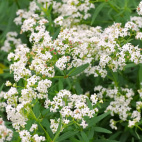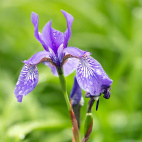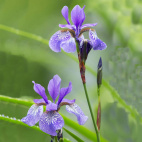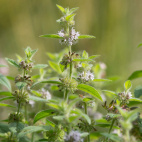Color
Availability
USDA Zone
Region
Type
Duration
Season
Germination
Soil
Sunlight
Height
Use
Narrow Your Search
Color
Availability
USDA Zone
Region
Type
Duration
Season
Germination
Soil
Sunlight
Height
Use
Wildflower Seeds - Northern Region
The Northern region is home to our Canadian friends in the eastern provinces, as well as the northern-most part of the Eastern US. This area is characterized by a long, cold winter with lots of snow, and a short humid summer that only lasts about 3 or 4 months. Most of the area is classified as a UDSA Growing Zone 4 or less, and the species that grow here have interesting ways to perpetuate themselves in spite of the short growing season. There are a lot of forests and wetlands in this region, so adequate moisture is hardly ever a problem. Look up your growing zone to make sure that the Northern wildflower seeds that you want to grow are winter hardy. Alternatively, just order annual flower seeds online so that the plant does not need to make it through the winter, but can reseed itself and come back from seed the next year.
-
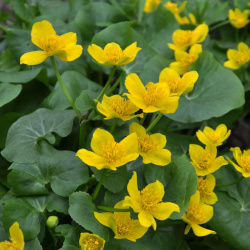 Store in the FridgeOut Of Stock
Marsh Marigold Seeds
Caltha palustris
Traditionally known as cowslips or kingcups, marsh marigolds often bring the first spring color to their native marsh. Thriving in bogs and swamps, they also make a lovely addition to a water garden.Quick View$3.75 Pkt - $200.00 / Oz
Store in the FridgeOut Of Stock
Marsh Marigold Seeds
Caltha palustris
Traditionally known as cowslips or kingcups, marsh marigolds often bring the first spring color to their native marsh. Thriving in bogs and swamps, they also make a lovely addition to a water garden.Quick View$3.75 Pkt - $200.00 / Oz -
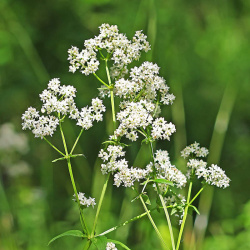 Northern Bedstraw Seeds
Galium boreale
This plant has a sweet, hay-like scent when dried, and was used for stuffing mattresses and pillows in medieval times. Today, it is primarily used as a component in native wildflower seed mixes, but can be grown as a specimen plant as well.Quick Viewx
Northern Bedstraw Seeds
Galium boreale
This plant has a sweet, hay-like scent when dried, and was used for stuffing mattresses and pillows in medieval times. Today, it is primarily used as a component in native wildflower seed mixes, but can be grown as a specimen plant as well.Quick ViewxNorthern Bedstraw Seeds
Galium boreale
This plant has a sweet, hay-like scent when dried, and was used for stuffing mattresses and pillows in medieval times. Today, it is primarily used as a component in native wildflower seed mixes, but can be grown as a specimen plant as well.
$3.96 Pkt - $220.00 / Oz -
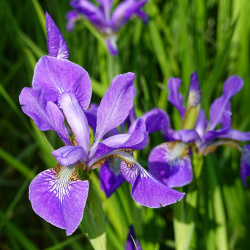 Northern Blue Flag Seeds
Iris versicolor
The most well-known of the native Irises, these lacy blue and violet blossoms are a must for every gardener. This hardy perennial thrives in wetland areas, but can also be grown in mesic garden soils. It takes a few years to get up to blooming size.Quick Viewx
Northern Blue Flag Seeds
Iris versicolor
The most well-known of the native Irises, these lacy blue and violet blossoms are a must for every gardener. This hardy perennial thrives in wetland areas, but can also be grown in mesic garden soils. It takes a few years to get up to blooming size.Quick ViewxNorthern Blue Flag Seeds
Iris versicolor
The most well-known of the native Irises, these lacy blue and violet blossoms are a must for every gardener. This hardy perennial thrives in wetland areas, but can also be grown in mesic garden soils. It takes a few years to get up to blooming size.
$3.48 Pkt - $50.00 / Oz -
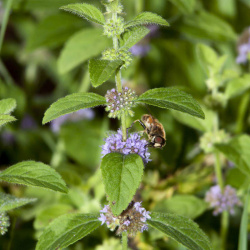 On Sale!
Wild Mint Seeds
Mentha arvensis
Containing a valuable essential oil, the leaves of this mint have numerous culinary and medicinal uses. This very minty perennial also bears small white to lavender flowers that always create a buzz among the honeybees.Quick View$3.75 Pkt - $120.00 / Oz
On Sale!
Wild Mint Seeds
Mentha arvensis
Containing a valuable essential oil, the leaves of this mint have numerous culinary and medicinal uses. This very minty perennial also bears small white to lavender flowers that always create a buzz among the honeybees.Quick View$3.75 Pkt - $120.00 / Oz
The Northern region is home to our Canadian friends in the eastern provinces, as well as the northern-most part of the Eastern US. This area is characterized by a long, cold winter with lots of snow, and a short humid summer that only lasts about 3 or 4 months. Most of the area is classified as a UDSA Growing Zone 4 or less, and the species that grow here have interesting ways to perpetuate themselves in spite of the short growing season. There are a lot of forests and wetlands in this region, so adequate moisture is hardly ever a problem. Look up your growing zone to make sure that the Northern wildflower seeds that you want to grow are winter hardy. Alternatively, just order annual flower seeds online so that the plant does not need to make it through the winter, but can reseed itself and come back from seed the next year.




